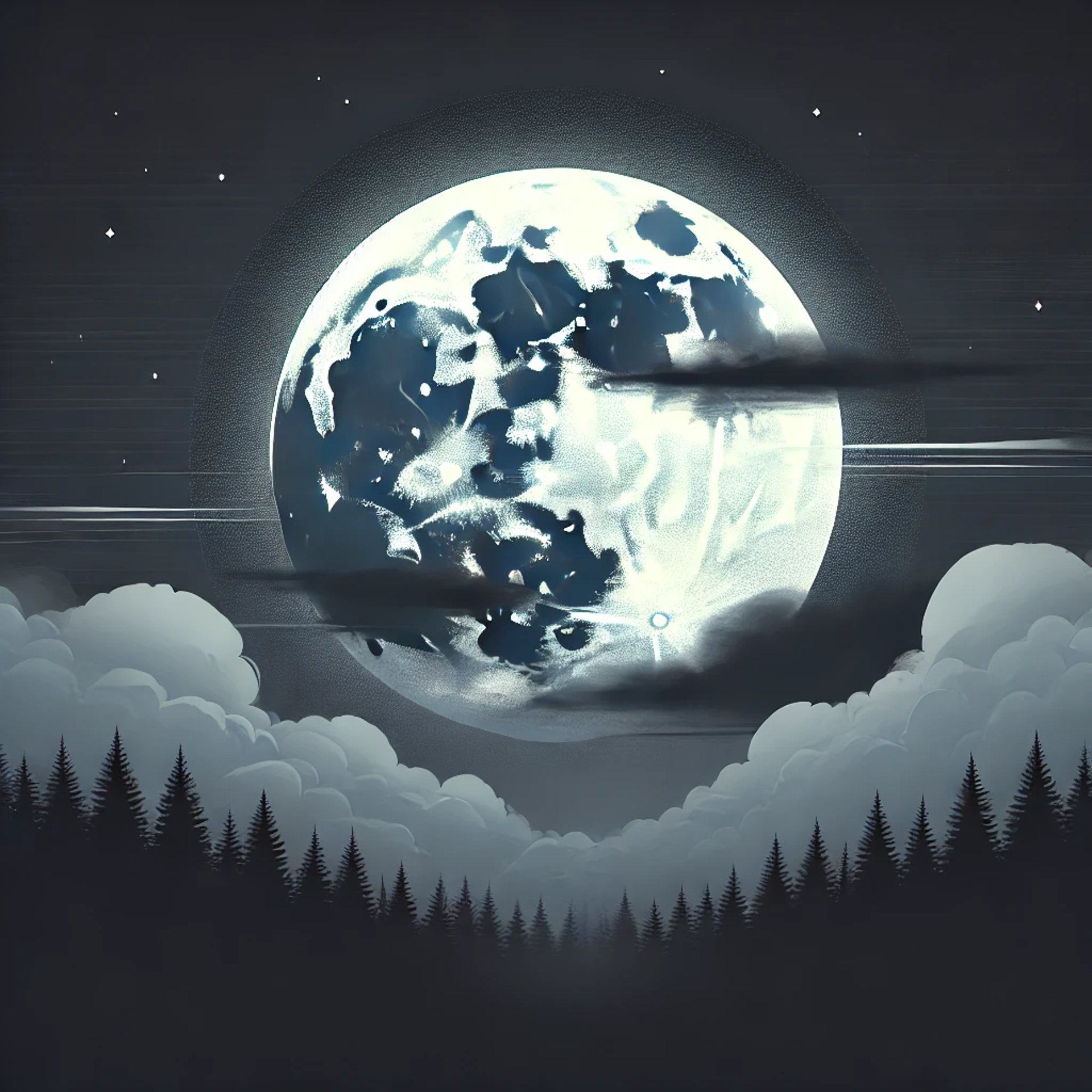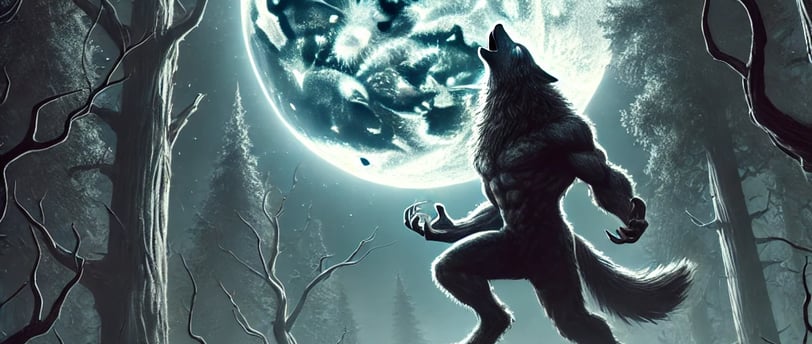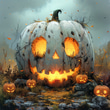Under the Moonlight: The Life and Lore of the Werewolf
Discover the lore, pop culture, and psychology behind the werewolf. From ancient myths to modern tales, explore why these moonlit beasts still captivate us! 🌕🐺
MYTHOLOGY AND FOKLORE
Billys Zafeiridis
11/23/20244 min read



There’s something about the moon, isn’t there? That silvery orb hanging in the sky, cool and distant, but somehow deeply personal. It’s like it sees right into you. For me, the fascination with the moon—and everything it might awaken—started on a summer night when I was about ten. I’d snuck out of the house with a flashlight to read under a tree in the backyard. (Why under a tree? I have no idea. Dramatic kid stuff, I guess.) The light was dim, my imagination was wild, and in the silence, I swore I heard a low growl from the bushes.
I ran back inside, heart pounding. That night, I had my first werewolf dream.
Werewolves, man. They’ve got claws deep in our culture—these creatures of myth, fear, and transformation. But why? Why are we so drawn to the idea of a person turning into a beast under the full moon? Let’s dig into it, from the ancient folklore to the way we still can’t seem to get enough of them in books and movies.
The Origins: Where the Wolf Meets the Man
Here’s a fun fact: the idea of humans turning into animals isn’t unique to Europe or even wolves specifically. Ancient Greeks had their own werewolf-ish stories. There’s this tale about King Lycaon (yeah, his name is where “lycanthropy” comes from), who supposedly served human flesh to Zeus at a banquet. Zeus, being Zeus, flipped out and turned Lycaon into a wolf. Kind of poetic justice, right?
Meanwhile, Norse mythology has stories of warriors who wore wolf pelts and were said to channel the beast’s strength. These “ulfhednar” were basically the OG werewolves, minus the full-moon thing. And let’s not forget the Native American skinwalkers—witches who could transform into animals to do their bidding. It’s like every culture had this collective itch about man becoming animal, losing control, giving in to raw instinct.
But somewhere along the way, wolves became the star of the show. Maybe because they’ve always been our neighbors—close enough to hear their howls at night, scary enough to keep us wary. And honestly, wolves are perfect metaphors for what lurks in the dark corners of our psyche: primal, untamed, and hungry.
The Curse of the Moon: Truth or Hollywood?
Now, let’s talk about the full moon. This part of werewolf lore is more modern than you’d think. Old stories didn’t always make the connection between werewolves and lunar phases. Some said people turned into wolves after wearing a cursed belt or drinking from a wolf’s pawprint filled with water. Others blamed witchcraft or a demonic pact. The moon’s role only really came into play in the 19th and 20th centuries.
And honestly, it makes sense. The full moon is a time marker, a bright and eerie symbol of cycles, madness, and mystery. There’s even an old belief that the moon messes with our minds (the word “lunatic” comes from luna, after all). So, why not tie it to the ultimate loss of control—turning into a snarling, bloodthirsty monster?
Hollywood took this and ran with it. Ever seen The Wolf Man (1941)? It’s the granddaddy of modern werewolf movies, and it cemented the rules: bitten by a wolf? You’re cursed. Full moon? You transform. Silver bullets? That’s your ticket to freedom—or, you know, death.
Werewolves in Pop Culture: From Horror to Heartthrobs
Here’s the thing about werewolves: they’ve evolved. Once upon a time, they were pure horror—mindless beasts tearing through villages. But now? Now they’re complex. They’ve got feelings, tragic backstories, and (let’s be real) abs for days.
Take Teen Wolf—the cheesy ’80s movie turned into a surprisingly addictive TV show. Or the Twilight saga, where Jacob Black’s werewolf pack brought some serious drama (and a love triangle). These modern werewolves aren’t just monsters. They’re metaphors for identity, adolescence, and the battle between our civilized selves and our wild, untamed desires.
But you know what I love? They’re still scary. In shows like The Witcher or Penny Dreadful, werewolves are unpredictable and dangerous. And then there’s An American Werewolf in London—probably the best werewolf movie of all time, in my humble opinion. That transformation scene? Chills. Every time.
What Makes Werewolves So Relatable?
Okay, let’s get deep for a second. Why do werewolves stick with us? Why not vampires or zombies? I think it’s because they hit a nerve. Werewolves are us. Not the polite, latte-drinking, small-talk-at-the-office us, but the messy, emotional, angry us. The us that slams doors and says things we don’t mean. The us that wants to howl at the moon when life gets too much.
They’re about control—or the lack of it. And isn’t that a universal fear? Losing control of your body, your emotions, your choices? It’s terrifying. But at the same time, there’s something liberating about the idea of just… letting go. Of running wild, free from judgment or responsibility.
Werewolves IRL: The Science of Shapeshifting
Here’s a weird twist for you: there’s a real medical condition called lycanthropy, where people genuinely believe they’re turning into wolves. It’s super rare, but psychologists have documented cases. It’s linked to psychosis and delusions, but isn’t it fascinating that our brains can latch onto this specific myth?
And then there’s hypertrichosis, a genetic disorder where excessive hair grows all over the body. Back in the day, people with hypertrichosis were often mistaken for werewolves. It’s sad, really—how myths can shape how we treat each other.
Howling Into the Future: Why We’ll Never Let Go of Werewolves
You know what I think? Werewolves aren’t going anywhere. They’re too much a part of us—our fears, our fantasies, our contradictions. As long as we wrestle with the line between humanity and animality, we’ll keep telling stories about the moonlit transformation.
And who knows? Maybe there’s a little bit of werewolf in all of us. A part that’s wild, fierce, and ready to run free when the world gets too heavy. So next time you see the full moon, maybe you’ll feel it—a tingle at the base of your spine, a sudden itch behind your ears. Maybe you’ll want to let out a howl.
Just once. For fun.
